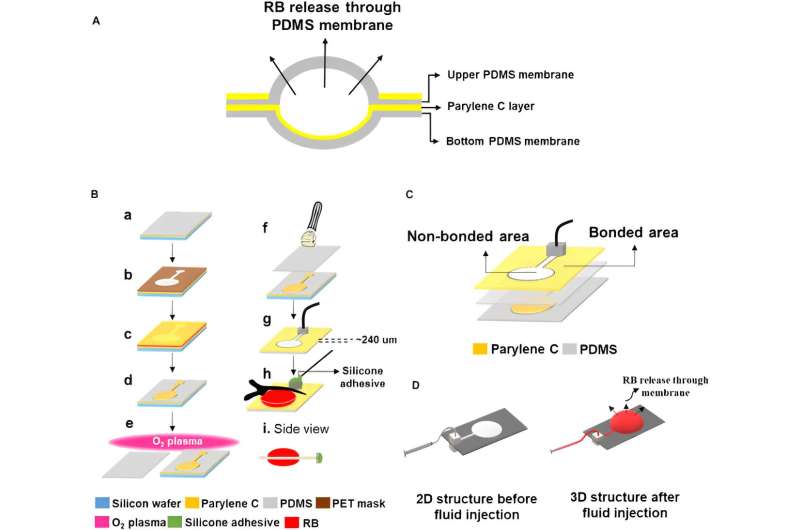This article has been reviewed according to Science X's editorial process and policies. Editors have highlighted the following attributes while ensuring the content's credibility:
fact-checked
proofread
Soft implantable polymer balloon enables controlled and targeted drug delivery

Implants that steadily release the right dose of a drug directly to the target part of the body have been a major advance in drug delivery. However, they still face some key challenges, such as ensuring the drug is released at a constant rate from the moment it is implanted and ensuring that the implant is soft and flexible enough to avoid tissue damage but tough enough not to rupture.
One particular challenge is to avoid triggering the foreign body response, which is when the patient's body encloses the implant in a tight capsule of tough connective tissue which can slow the drug's release or prevent it from diffusing out.
In a paper published in Biomaterials Research, a team led by researchers from the Daegu Gyeongbuk Institute of Science and Technology (DGIST) in the Republic of Korea present data on their non-biodegradable, ultrasoft, and flexible balloon implant for drug delivery. Their findings demonstrate the balloon's effectiveness in delivering a model drug both in the laboratory setting and in animal models.
The balloon consists of two halves. One is made of a single-layer of a rubbery silicone-based polymer called polydimethylsiloxane, and the other is a two-layer combination of polydimethylsiloxane on the outside and the non-permeable polymer parylene C lining the inside. That ensures that the drug only diffuses out from one side of the balloon, making it easier to control the direction of drug delivery.
The team experimented with polymer membranes of different thicknesses and compositions to study how that affected drug diffusion and membrane strength. "We were able to achieve a sustained drug release for more than five months, and all the devices remained intact for this duration despite the ultrasoft mechanical properties," explains corresponding author Sohee Kim, a professor at DGIST.
The balloons were filled with a fluorescent dye to serve as a drug model and then implanted into rats and mice. The dye was released at a steady rate of 1.16 micrograms per day, without any significant variation in dose for 30 days and with very little variation for 58 days.
"Most importantly, the ultrasoft mechanical properties of the device ensured less foreign body responses than previously developed reservoir-type devices, with relatively thin fibrotic encapsulation," Tausif Muhammad, the first author of the study, says.
Such a device could have implications for long-term drug delivery for a wide range of diseases and conditions, including diabetes, epilepsy, heart disease and cancer. They could also include sensors to allow ongoing, real-time monitoring of disease and physiological markers. The researchers are now planning to study the balloon's effectiveness in delivering anti-cancer drugs in a brain cancer model.
More information: Tausif Muhammad et al, An Ultrasoft and Flexible PDMS-Based Balloon-Type Implantable Device for Controlled Drug Delivery, Biomaterials Research (2024). DOI: 10.34133/bmr.0012





















